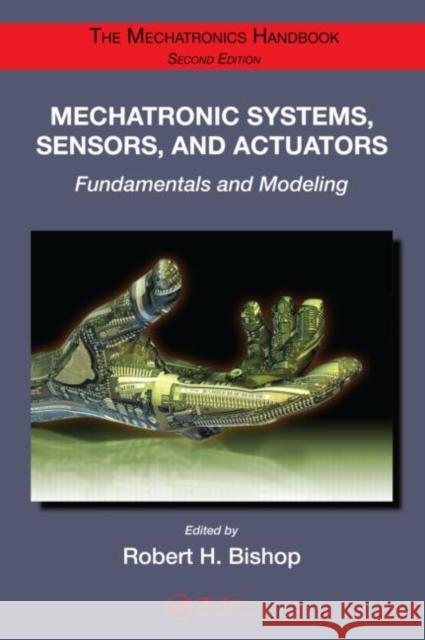Mechatronic Systems, Sensors, and Actuators: Fundamentals and Modeling » książka
Mechatronic Systems, Sensors, and Actuators: Fundamentals and Modeling
ISBN-13: 9780849392580 / Angielski / Twarda / 2007 / 692 str.
The first comprehensive and up-to-date reference on mechatronics, Robert Bishop's The Mechatronics Handbook was quickly embraced as the gold standard for the field. With updated coverage on all aspects of mechatronics, The Mechatronics Handbook, Second Edition is now available as a two-volume set. Each installment offers focused coverage of a particular area of mechatronics, supplying a convenient and flexible source of specific information. This seminal work is still the most exhaustive, state-of-the-art treatment of the field available. Mechatronics Systems, Sensors, and Actuators: Fundamentals and Modeling presents an overview of mechatronics, providing a foundation for those new to the field and authoritative support for seasoned professionals. The book introduces basic definitions and the key elements and includes detailed descriptions of the mathematical models of the mechanical, electrical, and fluid subsystems that comprise mechatronic systems. New chapters include Mechantronics Engineering Curriculum Design and Numerical Simulation. Discussion of the fundamental physical relationships and mathematical models associated with commonly used sensor and actuator technologies complete the coverage. Features
The first comprehensive and up-to-date reference on mechatronics, Robert Bishop’s The Mechatronics Handbook was quickly embraced as the gold standard for the field. With updated coverage on all aspects of mechatronics, The Mechatronics Handbook, Second Edition is now available as a two-volume set. Each installment offers focused coverage of a particular area of mechatronics, supplying a convenient and flexible source of specific information. This seminal work is still the most exhaustive, state-of-the-art treatment of the field available. Mechatronics Systems, Sensors, and Actuators: Fundamentals and Modeling presents an overview of mechatronics, providing a foundation for those new to the field and authoritative support for seasoned professionals. The book introduces basic definitions and the key elements and includes detailed descriptions of the mathematical models of the mechanical, electrical, and fluid subsystems that comprise mechatronic systems. New chapters include Mechantronics Engineering Curriculum Design and Numerical Simulation. Discussion of the fundamental physical relationships and mathematical models associated with commonly used sensor and actuator technologies complete the coverage.











